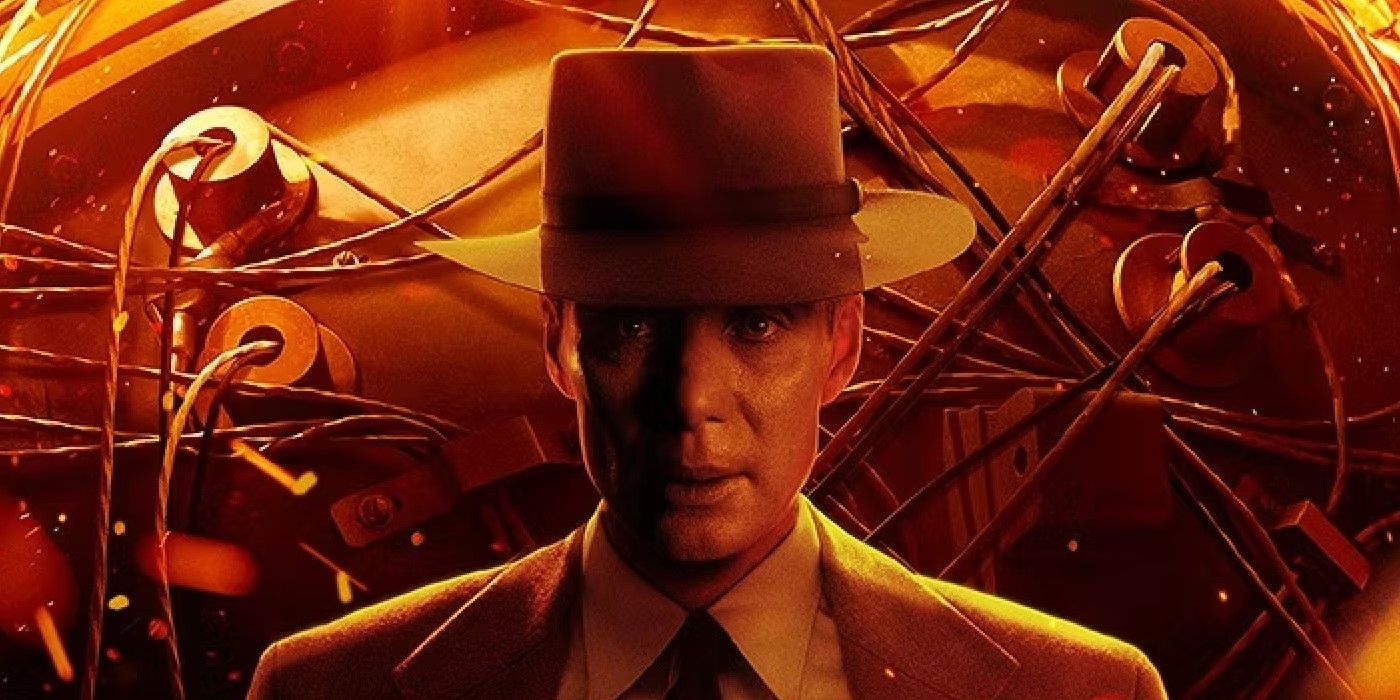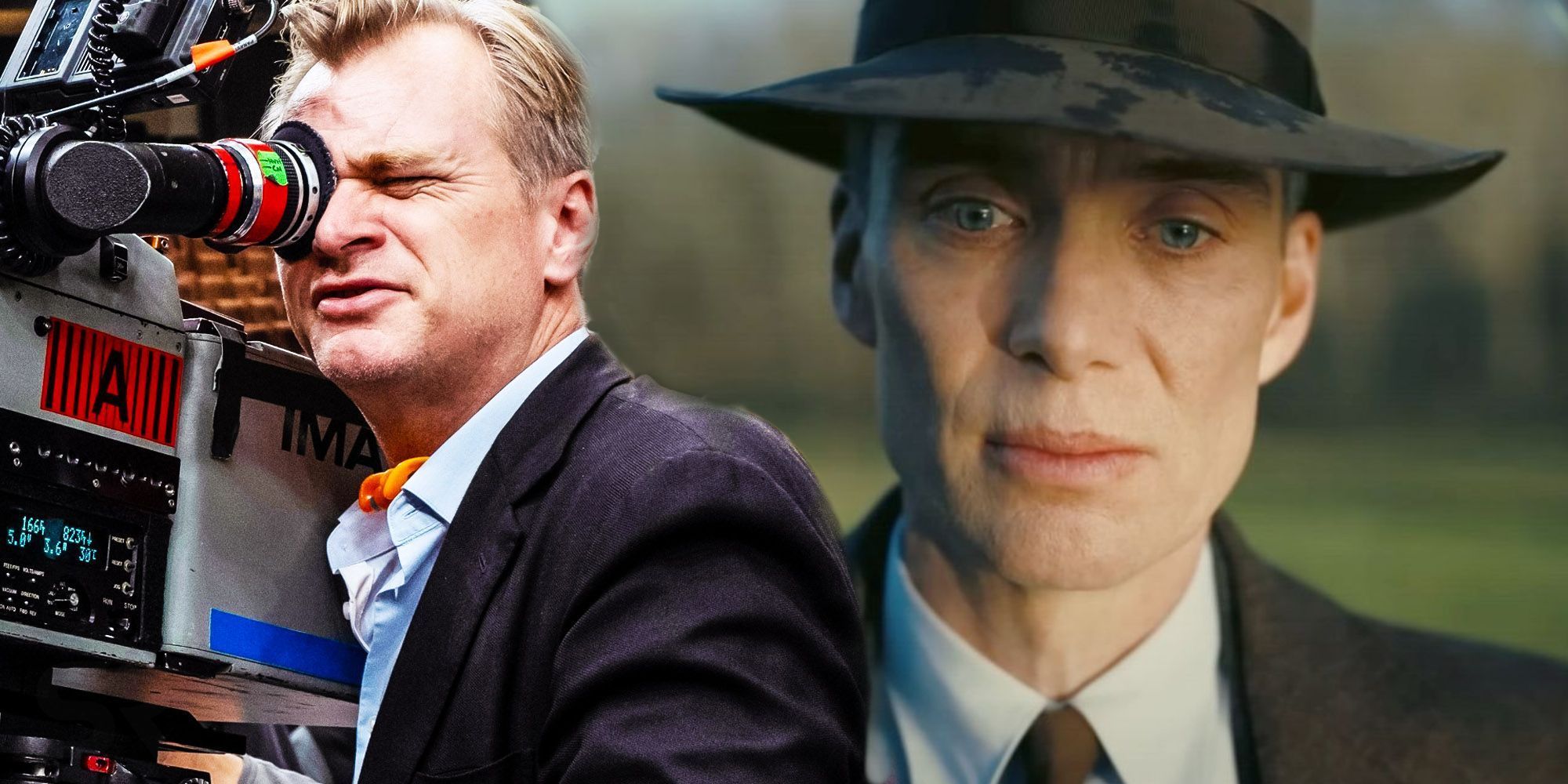
The Explosive Reason Behind Oppenheimer's Black and White Shifts

Experience the explosive story behind humanity’s ultimate weapon with Oppenheimer, the highly-anticipated biopic from the director of blockbusters The Dark Knight, Inception, and Interstellar Starring Cillian Murphy as A-bomb creator Robert Oppenheimer, the film shifts between black-and-white and color for a unique cinematic experience Don't miss the release on July 21
Director Christopher Nolan, known for his blockbuster films The Dark Knight, Inception, and Interstellar, is set to release his highly-anticipated biopic about A-bomb creator Robert Oppenheimer. The film, starring Cillian Murphy as Oppenheimer, has already captivated audiences with its explosive trailers, promising a gripping story about the race to create humanity's ultimate weapon.
One of the most intriguing aspects of the Oppenheimer trailers is the use of both color and black-and-white cinematography. In a recent interview with Total Film, Nolan revealed that this unconventional approach was written into the script from the very beginning and serves as a symbolic shift in perspective.
Nolan's decision to alternate between color and black-and-white is a deliberate choice, meant to represent a change in the way the story is being told. This bold technique promises to immerse viewers in the complex world of Oppenheimer and the race to build the atomic bomb.
In a recent interview, acclaimed filmmaker Christopher Nolan revealed that he took a unique approach to writing the script for his upcoming film, Oppenheimer. In a departure from his usual style, Nolan wrote the script in the first person, a technique that he had never used before. While he acknowledges that he's not sure if anyone else has done this before, he believes that it adds a new dimension to the film's storytelling.
The film itself is a mix of objective and subjective elements, with the color scenes being subjective and the black-and-white scenes being objective. Nolan wrote the color scenes from the first person, which he admits could be daunting for an actor reading the script. However, he believes that this approach will allow the audience to experience the story in a more immersive way, as they are seeing the events unfold through the eyes of the characters.
Nolan's use of subjective and objective elements in Oppenheimer suggests that the film will explore both the personal and historical aspects of the story. By using the first person in the color scenes, he is able to delve deeper into the characters' emotions and motivations, while the objective black-and-white scenes provide a more detached and factual perspective on the events of the story. This combination of styles is sure to make Oppenheimer a unique and compelling film.
Part 3: Unraveling the Mystery of Oppenheimer
Christopher Nolan's upcoming film, Oppenheimer, has been shrouded in secrecy, leaving many fans wondering about the story and its characters. However, Nolan has given us a few clues about what to expect from the epic biopic.
The film will center around J. Robert Oppenheimer, the physicist who led the Manhattan Project, which developed the first atomic bomb. Nolan has described Oppenheimer as a "complex figure" and has hinted that the film will delve into his personal life, as well as his professional accomplishments.
One of the most intriguing aspects of Oppenheimer is its historical setting. Nolan has said that the film will take place in the 1940s and 50s, a time of great scientific and political upheaval. The Manhattan Project was one of the most significant events of the 20th century, and its impact is still being felt today.
Another aspect of Oppenheimer that has generated excitement is Nolan's use of practical effects. The director is known for his love of practical effects and has promised to use them extensively in the film. This will undoubtedly add to the sense of realism and authenticity that Nolan is known for.
In conclusion, Oppenheimer is shaping up to be a fascinating film that will explore the life and legacy of one of the most important scientists of the 20th century. With Nolan at the helm and a talented cast and crew, it's sure to be an epic and unforgettable experience for audiences.
When it comes to Christopher Nolan's upcoming film Oppenheimer, one of the most exciting aspects is its use of both color and black-and-white scenes. Nolan previously employed this technique in his film Memento, where black-and-white scenes followed a linear order while the color scenes moved backward in time. However, in Oppenheimer, the focus is more on shifting perspectives rather than time-related acrobatics. This will come as a welcome relief to those who found Nolan's previous films confusing.
One of the most impressive things about Oppenheimer is Nolan's dedication to practical effects. In fact, he went so far as to recreate the Trinity atomic test without the use of CGI. This dedication to practical filmmaking also extended to building a recreation of Los Alamos. These were "huge practical challenges," according to Nolan, but the trailers suggest that his hard work has paid off. Oppenheimer promises to be a mind-blowing film that lives up to Nolan's previous works.














